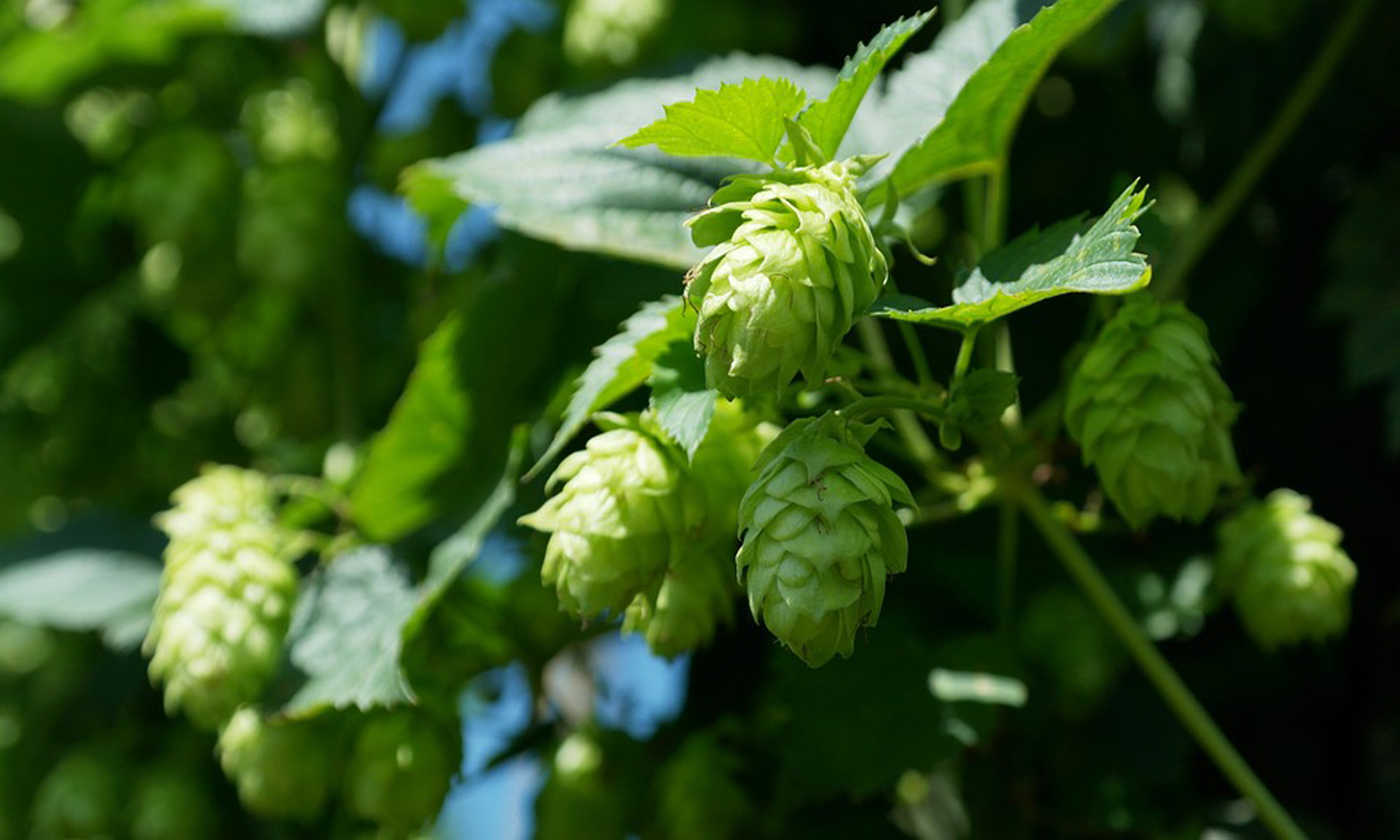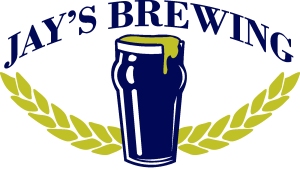 Its a good thing to know the hop profiles that you put in your beer as well as the hop substitutes for that particular beer that you are making. So many times there are these weird out of the blue hop shortages that happen. The worst was just a few years back which homebrew shops were limiting the amount of hops people could buy because they didn’t know when they were going to get them.
Its a good thing to know the hop profiles that you put in your beer as well as the hop substitutes for that particular beer that you are making. So many times there are these weird out of the blue hop shortages that happen. The worst was just a few years back which homebrew shops were limiting the amount of hops people could buy because they didn’t know when they were going to get them.
The problem with hop shortages is that they really happen over night. The one a few years ago happened because in Czech they had a hail storm which wiped out the hop fields and then in Yakima where the hops are stored in the US, there warehouse burned down. It was the perfect storm which made some hops go up to $7.99 and up for 2 ounces. It was bad.
Either way, it’s nice to be prepared. So at Jay’s Brewing we created this Hop Profile Guide with some substitutes to help you better prepare yourself in case hops become difficult to get.
Amarillo:
Sometimes described as “super cascade”.
Alpha Acid: 7-9%
Usage: Flavor and Aroma in American style ales
Possible Substitutes: Cascade, Centennial, Summit, Ahtanum
Brewers Gold
Spicy and fruity
Alpha Acid: 8-10%
Usage: Bittering
Possible Substitutes: Bullion, Chinook, Galena, Nugget
Bullion
One of the oldest high-alpha hops in the world. It’s and English hop. It is earthy/musty
Alpha Acid: 6.5-9%
Usage: Bittering
Possible Substitutes: Columbus, Northern Brewer
Cascade
Very versatile hop that presents itself as citrusy and flowery.
Alpha Acid: 5-7%
Usage: Flavor, Aroma, and Bittering.
Possible Substitutes: Amarillo, Centennial, Summit
Centennial
Similar to Cascade but with a higher alpha acid %.
Alpha Acid: 7.5-11%
Usage: Flavor, Aroma, and Bittering.
Possible Substitutes: Amarillo, Cascade, Columbus, Summit
Challenger
Strong, spicy. A clean bittering hop.
Alpha Acid: 6.5-8.5%
Usage: Bittering Possible Substitutes: Perle, Admiral
Chinook
Spicy aroma, somewhat herbal.
Alpha Acid: 10-14%
Usage: Bittering.
Possible Substitutes: Brewers Gold, Columbus, Galena, Nugget, Northern Brewer
Cluster
This was the precursor to cascade hops, so very similar.
Alpha Acid: 6-8.5%
Usage: Bittering Possible Substitutes: Galena, Cascade
Columbus
Herbal aroma, solid bittering hop
Alpha Acid: 11-15%
Usage: Bittering.
Possible Substitutes: Magnum, Chinook, Northern Brewer, Warrior, Millenium, Bullion
Crystal
Slightly spicy aroma
Alpha Acid: 3-4.5%
Usage: Flavor and Aroma
Possible Substitutes: Mt. Hood, Liberty, Hallertauer, Tettnanger, Strisselspalt
East Kent Goldings
Traditional English ale hop.
Alpha Acid: 4-6%
Usage: Flavor, Aroma, and Bittering.
Possible Substitutes: Fuggle, Progress, First Gold
Fuggle
Grassy, light aroma. Used in English style Ales.
Alpha Acid: 4-6%
Usage: Flavor, Aroma, and Bittering.
Possible Substitutes: Willamette, Styrian Golding, Tettnanger, Newport
Galena
Pretty bitter hop, but extremely clean.
Alpha Acid: 10-14%
Usage: Bittering.
Possible Substitutes: Brewers Gold, Nugget, Cluster, Chinook, Eroica, Newport
Glacier
Citrus aroma with candy like qualities.
Alpha Acid: 5.5%
Usage: Aroma
Possible Substitutes: Willamette, Fuggle, Tettnanger, Styrian Goldings
Hallertau
Nice all-around hop with pleasant characteristics. German noble hop.
Alpha Acid: 3-6%
Usage: Flavor, Aroma, and Bittering.
Grown in the U.S. and Germany. Possible Substitutes: Liberty, Tettnanger, Mt.Hood, Vangaurd, Tradition
Horizon
Presents a nice, soft round bitterness for such a high-alpha hop.
Alpha Acid: 11-14%
Usage: Flavor, Aroma, and Bittering.
Possible Substitutes: Magnum
Liberty
Very light aroma
Alpha Acid: 3-6%
Usage: Flavor and Aroma.
Possible Substitutes: Hallertau, Tettnanger, Mt. Hood, Crystal
Magnum
Alpha Acid: 13-15%
Usage: Bittering
U.S. Possible Substitutes: Horizon, Newport
Mt. Hood
Extremely close to Hallertau, but a bit spicier
Alpha Acid: 4-7%
Usage: Flavor and Aroma.
Possible Substitutes: Hallertauer, Liberty, Crystal, Strisselspalt
Northern Brewer
Clean hop, has woody characteristics to it
Alpha Acid: 7-10%
Usage: Flavor, Aroma, and Bittering. Good all-around hop. Used quite often in Steam Beers.
Possible Substitutes: Nugget, Chinook, Columbus, Bullion, Perle, Styrian Aurora
Nugget
Very strong bittering hop.
Alpha Acid: 11-14%
Usage: Flavor, Aroma, and Bittering
Possible Substitutes: Cluster, Galena, Brewers Gold, Warrior, Eroica, Target, Millenium
Perle
Almost minty smell to it.
Alpha Acid: 6-9%
Usage: Flavor, Aroma, and Bittering Possible Substitutes: Challenger, Northern Brewer
Progress
English hop developed to provide a more wilt-resistant alternative to Fuggles.
Alpha Acid: 5-8%
Usage: Bittering.
Possible Substitutes: Fuggles, E.K. Goldings
Saaz
Very light and clean, seen in a lot of Pilsners
Alpha Acid: 3-4.5%
Usage: Flavor and Aroma.
Possible Substitutes: Sladek, Lublin, Sterling, Ultra, Vangaurd
Simcoe:
Has a passion fruit aroma to it.
Alpha Acid: 12%-14%
Usage: Bittering and Aroma
Possible Substitutes: Northern Brewer, Galena
Sterling
Earthy, spicy, but very similar to Saaz
Alpha Acid: 6%-9%
Usage: Aroma
Possible Substitutes: Saaz, Lublin
Styrian Goldings
Very similar to Fuggles
Alpha Acid: 5.5%
Usage: Bittering and Aroma
Possible Substitutes: Fuggle, Willamette
Tettnanger
Spicier then Hallertau. It is a traditional german noble hop.
Alpha Acid: 3-5%
Usage: Flavor and Aroma.
Possible Substitutes: Hallertau, Liberty, Fuggle
Vangaurd
Slightly flowery, mild in aroma.
Alpha Acid: 5.5% – 6%
Usage: Aroma
Possible Substitutes: Saaz, Hallertauer
Warrior
Extremely clean bittering hop.
Alpha Acid: 15%-17%
Usage: Bittering
Possible Substitutes: Nugget, Columbus
Willamette
Hybrid of fuggles, earthy and woody
Alpha Acid: 4%-6%
Usage: Aroma and flavoring
Possible Substitutes: Styrian Golding, Target, Fuggle, Tettnanger, Glacier
We did get a bit of help and these were the sites that we went to:
http://www.thebitterbrewer.com/viewtopic.php?f=29&t=80
http://www.homebrewzone.com/hops_varieties.htm









































